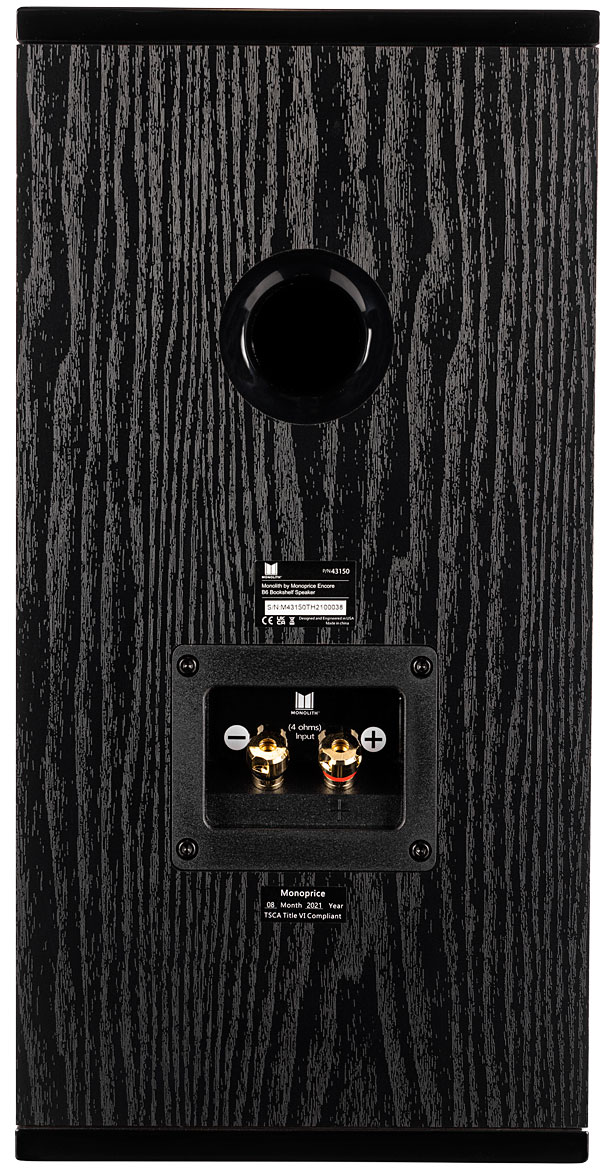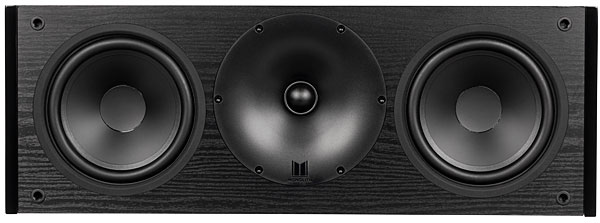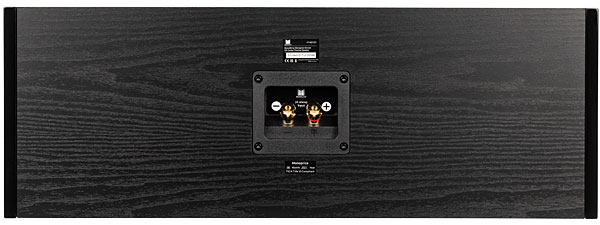Monolith By Monoprice Encore T6 Speaker System Review Page 2
However, no speaker is without blemishes, and these are the ones I uncovered with the Encore T6. First, in my room at least, the towers had a bit too much output over their bottom two useful octaves (about 35-140Hz), resulting in excessively warm, though not really boomy, bottom end until I pulled them some six feet-plus out from the front wall. (For the record, a simple shelving filter, implemented via Roon's DSP feature, of about -2 dB at 135 Hz in concert with my usual 85Hz room-mode notch, mitigated this almost perfectly.)
Second, at levels cresting the highest loudness I would generally use in "civilian" listening—crossing the 90 dBSPL/A line on my SPL meter— the Monolith towers displayed an emphasis on sibilants that became increasingly pronounced as volume and dynamics were pushed; this also manifested as a faint rasp on spoken-voice announcers when played at unnaturally loud (for speech) levels. Presumably, either the Encore tweeter was exciting a resonance, or the woofer was going non-linear at the crossover point, or a bit of both. But I don't consider this even close to crippling. Both effects were subtle, and in the first case room placement or room/speaker correction can easily address it, while the second only appeared beyond what I would consider the Encore towers' intended dynamic range.

Moving on to multichannel, I discovered that the Encore C6 center produced an unusually tight tonal match with the towers. On my initial test—male TV announcers—the stereo/mono tonal differences were about as small as I've encountered, boiling down mostly to the room-effects differences of two speakers versus a single speaker (two tweeters put more high-frequency energy into the room than one, hence a slight increase in treble from mono-front-pair versus mono- center reproduction). The match was close enough to inspire me to compare the two setups with my mono pink-noise signal. Aside from the aforementioned slight treble difference, the all-important midrange balances were nearly identical. Even better, this remained substantially the case even when I turned the C6 center about 30 degrees to one side, showing its off-axis balance to be very close to its straight-ahead sound. I don't know exactly how Monolith managed this from a dual-woofer, horizontal design, but I found it impressive.
Next up was multichannel music. With the B6 pair placed for discrete-multichannel listening, that is, about 35 degrees behind the listener line and angled toward the sweet spot, a tour of my SACD and DVD-Audio collection yielded outstanding results. One, the seldom-heard Copland Organ Symphony on an SFSMedia SACD (the San Fransisco Symphony's proprietary label), was particularly striking, drawing me into the enveloping atmosphere of the ruminative first movement. (The same disc contains Ives' Concord piano sonata, marvelously arranged for full orchestra by my late composi- tion teacher Henry Brant; it's a must-hear.) The Encore system's ideal timbral matching combined with the tight-sweet-spot setup to make elements like isolated harp plucks, enriched by hall reverberations, thrillingly real. In that first movement the organ bottoms out on a low G or possibly F-sharp at around 44 Hz or so. The T6 towers had no trouble reproducing this passage with convincing weight and purity, though later on in the finale, where the organ goes still lower and rather louder, the lack of lowest-octave prowess was evident. Nevertheless, with real output in my room to well below 50Hz, the Encore T6 went lower, and also more solidly, than several similar-sized towers of my recent experience.

I did observe that at fully concert-hall levels the biggest tutti slams in the climax of this occasionally slightly ponderous movement (Copland was only 23 when he wrote it) sounded a bit coarse, though backing off the volume a couple of dB subtly sweetened things back up. At 22 x 16 feet, mine's a big room; most will be smaller, and thus less likely to plumb the dynamic limits of any loudspeaker. Or the amplifier: it's not entirely impossible that my 150 watts-per-channel power amp was up against it on these demanding transients. Monolith specs the T6's sensitivity as 87.8dB SPL@1w/m, which felt about right. This is just on the low side of average, and the B6 bookshelf speakers are almost 3dB lower; in either case, better-than-decent amplification will pay dividends. I must also note that, per Monolith's on-line published specs and graphs, all three Encore designs report minimum impedances below 4 ohms. But that's not unusual today, and it's unlikely to be a problem for most modern amps or receivers.
I streamed a wide variety of 5.1-channel content while the Monolith system was in residence, among it the hypnotic entire seven-plus hours of The Beatles: Get Back, as well as last December's New England Patriots vs. Buffalo Bills "wind game" and results were consistently satisfying. The T6 towers-C6 center trio forms a highly cohesive front stage, so lateral pans and wide soundscapes like busy street scenes (or a football crowd) worked unusually well. But I don't entirely trust streamed content, and so always fall back on Blu-ray discs for confirmation. One old standby, the remastered The Fugitive made a strong example. At my sweet-spot listening chair, surround ambience and effects were wonderfully enveloping in the waterfall-jumping scene, and powerful rear-side pans remained smooth and intact. Of course, in this setup moving out of the sweet spot tended to make ambience and effects "pull" to the nearer speaker, but this is the weakness of any direct-radiating-surrounds layout, and why I still prefer my "outdated" dipole surrounds for all- purpose, non-Atmos 5.1 playback.

Despite the lack of a sub in this setup, the bus/train crash in the film's opening act had sufficiently satisfying impact to get the idea well across. Now, do the Encore T6 towers deliver enough deep bass for real cinematic impact?
Of course not, though I suspect they'll come close enough to keep a significant segment of listeners happy. Monoprice/Monolith offers a huge range of subwoofers, from ultra-value 8-inchers (way too little) to a new, small-fusion-reactor-sized 16-inch THX-Ultra jobbie and its only slightly smaller 13-inch cousin (full review upcoming). There are lots of choices in between, so you're bound to find one that's just right.
Conclusion
The Monolith by Monoprice Encore 6 series loudspeakers are nothing short of exemplary performers, and their value quotient is off the charts. (If there's a better $180 speaker out there than the B6, send me a pair, because I'd like to hear it.) And while direct, online buying is not for everyone, Monoprice does offer a 30-day money-back guarantee. (At the time of writing they were also offering free shipping.) I have no hesitation in recommending this Encore suite, enthusiastically, to any budget-conscious, performance-minded audio shopper.





























































